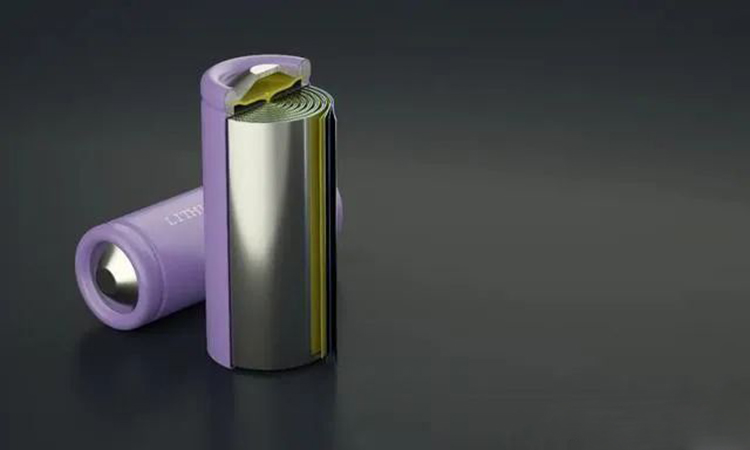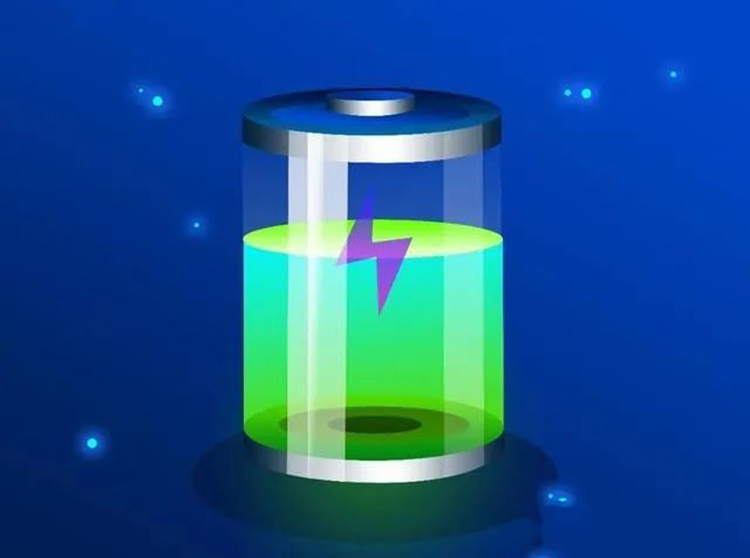Looking back at the iterative trend of positive electrode materials, it is found that lithium ferromanganese phosphate cannot really solve the problem of energy density increase, because it is more of a substitute for low-nickel ternary materials and lithium iron phosphate materials, while high-nickel ternary materials are still the ceiling of energy density of positive electrode materials. However, there is still a long distance for the lithium manganese base to enter the industrialization, so the improvement of anode materials has attracted much attention.
As the second main material, the negative electrode material can not raise the gram capacity ceiling in a short time, so the increase of gram capacity of the negative electrode material becomes the key contribution factor to improve the energy density of the battery. Anode materials are mainly used in natural graphite, its theoretical gram capacity is 372mAh/g, industrialization has been able to achieve 360-365mAh/g, the potential has been fully tapped, the application of the next generation of anode materials has been put on the agenda.
As a potential negative electrode scheme, the theoretical gram capacity of the silicon-based negative electrode is up to about 4200mAh/g, and the gram capacity of the lithium metal negative electrode is about 3800mAh/g, which has 10 times the potential to improve, meaning that the negative material can theoretically reduce the amount of more than 90%, which makes a great contribution to improving the energy density of lithium batteries.
There are two main technical routes for silicon-based negative electrode -- silico-oxygen (Si2O) negative electrode and silico-carbon negative electrode. While the high gram capacity of the silicon-based anode is attractive, its drawbacks are also very obvious.
During the process of silicon carbon charge and discharge, the volume shrinkage exceeds 300% (graphite only 12%), and multiple expansion and contraction will repeatedly destroy and re-form SEI film, which directly affects the battery life, and the power battery needs to meet the basic conditions of at least 1000 cycle life to have the possibility of commercial application. At present, the silicon carbon anode is basically in the stage of laboratory test to pilot test, and there is still a certain distance from industrialization.
At present, the application of silicon oxygen in lithium battery progress faster, although silicon oxygen gram capacity of about 2600mAh/g compared to silicon carbon gram capacity advantage is not so obvious, but its expansion is relatively small about 110%, after mixing artificial graphite has basically can meet the requirements of the power battery car.

Lithium metal cathode is considered as the ultimate form of cathode material, but its fatal problem is the insurmountable lithium dendrite problem. On the one hand, lithium dendrites are easy to Pierce the separator, which leads to the safety risk of fire and explosion in the application of lithium metal cathode in liquid batteries. On the other hand, lithium dendrites can lead to SEI film rupture and side reactions, resulting in low battery cycle life. Even in the scenario of 3C electronic products with lower requirements than power batteries, there is still a gap in the application of lithium metal batteries.
Lithium dendrite growth inhibition for lithium metal liquid battery is a long-term research topic, but lithium metal liquid battery is always a hidden danger due to the unstable negative electrode and flammable and volatile electrolyte characteristics. In order to solve the lithium dendrites and safety problems more thoroughly, the combination of solid electrolyte and lithium metal anode is expected to be high, because the all-solid lithium metal battery has better safety performance. At present, the industrialization progress of lithium metal anode is basically in the stage of laboratory trial to pilot test.
As the carrier of lithium ions and electrons, the negative electrode material mainly assumes the role of energy storage and release, which can directly affect the energy density, cycle life, safety and fast charging ability of the battery. Currently, the anode material is mainly artificial graphite, which accounts for about 10% to 15% of the cost of lithium-ion batteries.
But from the application situation, the actual specific capacity of graphite anode material has reached 360-365mAh/g, approaching the theoretical limit of 372mAh/g, restricting the development of the industry. The industry generally believes that in the future, with high specific capacity of silicon carbon anode materials (silicon specific capacity can reach 4200mAh/g, is 10-12 times of graphite materials) will become the development direction of anode materials.
Although the advantages are obvious, the expansion rate of silicon material is easy to affect the efficiency and life of the first charge of the battery, which restricts its commercial application in the negative electrode. According to the introduction, the expansion rate of silicon is as high as 320 percent, about 32 times that of graphite materials. In this regard, domestic anode material manufacturers actively follow up technology research and development, improve the cycle life and first charge efficiency by improving the electrochemical performance of silicon-based anode materials, and have achieved remarkable results.
At present, domestic enterprises are actively promoting the pilot test and mass production of new products such as silicon oxygen, silicon carbon and hard carbon, among which the pilot test line of silicon anode material has been built and passed the certification of some customers. For example, Kaijin New Energy adopts a variety of innovative technologies and improvement processes such as unique carbon coating modification, nanoization, heat treatment and carbon material composite, which can effectively solve the technical problems such as large volume expansion of silicon materials and poor cycle performance, and achieve obvious results in product cost and quality control. At present, the silicon-based anode materials of Kaijin New Energy mainly focus on the two aspects of silicon oxide and nano silicon, and it has a mature mass production technology and process line in this technical field. By December 2021, Kaijin New Energy has an annual capacity of 300 tons of silicon-based negative electrode materials, and has realized small-batch supply.
02
Electrolyte has great influence on the comprehensive performance of lithium battery, such as high and low temperature performance, rate performance, safety performance, etc. Electrolyte formula is also an important research direction.
The electrolyte is composed of solvent, lithium salt and electrolyte, among which the most important components are lithium salt and additives, adding about 12% and 8% respectively. Lithium difluorosulfonimide (LIFSI) is currently used as an additive in electrolytes (about 0.5% to 1% additive), and has attracted much attention due to its potential as a mainstream lithium salt in the future.
At present, the most mainstream electrolyte lithium salt is lithium hexafluorophosphate, because its comprehensive performance is stable and the cost is controllable. However, lithium hexafluorophosphate still has some defects. Its poor thermal stability and decomposition product HF affect battery performance at high temperature and conductivity at low temperature. LIFSI with good thermal stability and high and low temperature performance is used to improve the comprehensive performance of electrolyte. The reason why LIFSI is not added in high quantity before is its strong corrosion and high price. To solve the corrosion problem of aluminum foil, other additives can be used to passivate aluminum foil in advance. On the other hand, LIFSI is becoming less expensive as lithium hexafluorophosphate continues to rise in price since the end of 2020, and battery manufacturers are gradually experimenting with higher percentage additions.
LIFSI is currently in the early stage of mass production. Mainstream electrolyte manufacturers and lithium salt manufacturers are in the stage of accelerating production expansion. Listed companies such as Tianci Materials, Yongtai Technology, New Zhoubon, Polyfluoro and so on have proposed mass production capacity planning of 10,000 tons.

The electrolyte, known as the "blood" of lithium-ion batteries, is responsible for transporting lithium ions. Generally, the electrolyte is prepared by high purity organic solvents, electrolytes, additives and other materials under certain conditions in a certain proportion, accounting for about 5%-10% of the production cost of lithium batteries.
As an important additive in lithium battery electrolyte, vinylene carbonate (VC) can improve battery capacity and cycle life, and play a significant role in improving the comprehensive performance of lithium battery. As an important component of organic solvents, the demand for carbonate is also rising rapidly. In this context, domestic enterprises actively expand production capacity to ease the pressure of supply and demand. (Aooser can supply electrolytes in different proportions of materials)
03
At the same time, the demonstration project of new energy storage technology is progressing continuously, the diversified development of energy storage technology is promoted actively. For example, the 14th Five-Year Plan for the Development of New Energy Storage proposed to carry out research on key core technologies, equipment and integrated optimization design, such as sodium-ion batteries, new lithium-ion batteries, lead-carbon batteries, liquid flow batteries, compressed air, hydrogen (ammonia) energy storage, and hot (cold) energy storage, focusing on energy storage technologies such as superconductivity and supercapacitor. Develop and reserve liquid metal battery, solid lithium ion battery, metal air battery and other new generation of high energy density energy storage technology.
Lithium battery separator is a kind of thin film with microporous structure. It is the key inner component with the most technical barrier in the lithium ion battery industry chain, and also the latest link to realize domestic production, accounting for about 10%-20% of the cost of power battery. The separator is located between the positive electrode and the negative electrode of the lithium battery, the main function is to separate the positive and negative active substances, to prevent short circuit due to contact between the two poles; In addition, during the electrochemical reaction, the separator can also hold the necessary electrolyte, forming a channel for ion movement.
picture
Looking forward to the future, with the technological breakthrough and production layout of domestic enterprises in the field of lithium battery materials, the development status of the industry may be effectively improved, and a sustainable development road of green economy will be formed, and finally achieve high-quality development of the industry.
Contact: Jason Wang
Phone: 13580725992
E-mail: sales@aooser.com
Whatsapp:13580725992
Add: No.429 Guangming Road, Shenzhen City, Guangdong Province
We chat
